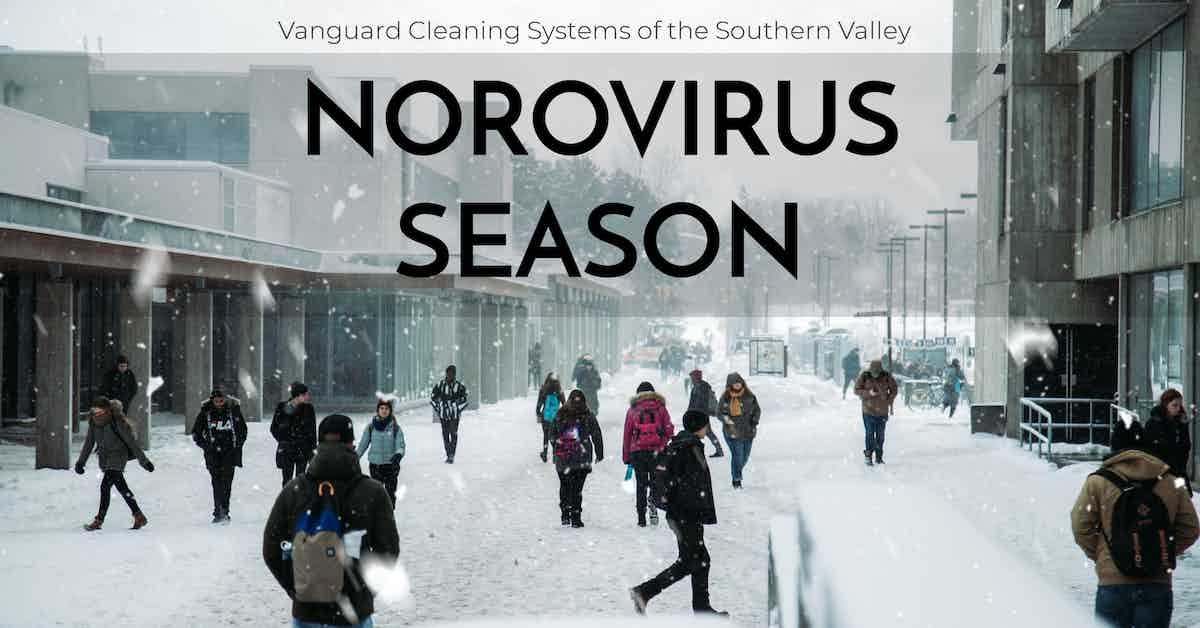Winter is upon us, which means people will gather indoors where their proximity will inadvertently contribute to the challenging-to-control spread of norovirus.

The Burden of Norovirus Infections
The norovirus is a seasonal infection possessing several unique characteristics:
-
- It is the leading cause of gastroenteritis worldwide.
- It spreads rapidly on land and sea.
- The virus most commonly occurs in schools, restaurants, and healthcare facilities--typically among children five and younger or seniors 65 and older.
- The pathogen is notoriously difficult to cultivate, so no approved vaccination is presently available.
- Health officials are uncertain why norovirus infections are seasonal but suspect human proximity indoors due to inclimate weather may play a strong role.
- The virus primarily spreads through direct or indirect contact but can become aerosolized, spread up to 25 feet, and infect hosts through inhalation.
The seasonal burden of the illness varies yearly but can range up to pandemic levels, particularly when a new strain emerges.
According to the CDC;
Most norovirus outbreaks in the United States happen from November to April.
In years when there is a new strain of the virus, there can be 50% more norovirus illness.
Each year, on average in the United States, norovirus causes:
900 deaths, mostly among adults aged 65 and older.
109,000 hospitalizations.
465,000 emergency department visits, mostly in young children.
2,270,000 outpatient clinic visits annually, mostly in young children.
19 to 21 million cases of vomiting and diarrhea illnesses.
The economic burden costs the U.S. economy more than $10B annually.
According to the National Institutes of Health;
A symptomatic case generated $48 in direct medical costs, $416 in productivity losses ($464 total).
The median yearly cost of outbreaks was $7.6 million (range across years, $7.5–$8.2 million) in direct medical costs, and $165.3 million ($161.1–$176.4 million) in productivity losses ($173.5 million total).
Sporadic illnesses in the community (incidence, 10–150/1000 population) resulted in 14 118–211 705 hospitalizations, 8.2–122.9 million missed school/work days, $0.2–$2.3 billion in direct medical costs, and $1.4–$20.7 billion in productivity losses ($1.5–$23.1 billion total).
The total cost was $10.6 billion based on the current incidence estimate (68.9/1000).
The Clinical and Economic Burden of Norovirus Gastroenteritis in the United States
Current NoroSTAT Data
The U.S. Centers for Disease Control and Prevention (CDC) Norovirus Sentinel Testing and Tracking (NoroSTAT) is a collaborative network consisting of the CDC and 12 state health departments across the country whose purpose is to collect and share norovirus outbreak data.
According to the most recent data;
[...] during the 2021 to 2022 surveillance year, the 12 NoroSTAT participating states reported 992 outbreaks of norovirus to the CDC.
In comparison, in 2019 to 2020 and 2020 to 2021 surveillance years, the same states reported 1,056 and 343 norovirus outbreaks, respectively.
During the prepandemic surveillance years, the number of norovirus outbreaks varied from 1,219 (2015 to 2016) to 1,471 (2018 to 2019).
The characteristics of norovirus outbreaks reported by NoroSTAT participating states during 2021 to 2022 were similar to those reported during the prepandemic years.
Eighty-two percent of outbreaks were due to person-to-person spread. Fifty-nine percent of outbreaks occurred in long-term care facilities.
Norovirus Transmission and Remediation
As previously mentioned, norovirus spreads in several ways:
- Direct contact with an infected host.
- Indirect contact with a contaminated surface, or;
- Through the air as an aerosolized particle.
Preventing direct transmission requires regular handwashing with soap and water after certain activities, especially using the restroom or preparing food.
Building and office managers can increase the likelihood that occupants wash their hands well and often by:
- Ensuring restrooms and handwashing stations are fully stocked with soap and paper supplies.
- Checking on restroom and handwashing station fixtures to ensure full functionality, and;
- Maintaining a very high standard of cleanliness in bathrooms and at handwashing stations.
Indirect transmission prevention requires regular custodial maintenance--typically:
- Daily surface cleaning with commercial-grade products and equipment (soap, microfiber, and HEPA-filtered vacuums).
- Regularly targeted hotspot disinfection with an EPA-registered disinfectant from List G, and;
- Increased cleaning and disinfection frequencies during community outbreaks.
Preventing airborne transmission is somewhat more challenging and may be complicated by the aerosolization of the pathogen in toilet plumes.
- Increase facility airflow, either naturally or mechanically, especially in restrooms and kitchens.
- Install air cleaners in tightly controlled environments, and;
- Install MERV-13 or higher HEPA filters in the HVAC system.
Norovirus spills--typically vomit--require special remediation protocols:
- Absorb the spill with paper towels and absorbent material.
- Clean the contaminated surface with an all-purpose commercial-grade detergent.
- Mop the contaminated surface using the two-bucket method.
- Disinfect the contaminated surface and surrounding area.
- Place all contaminated waste in a lined garbage can and dispose of it properly.
Always ensure that all service providers wear appropriate PPE and wash their hands and clothing after servicing a spill.
References & Resources
- ’Tis the Season…for Norovirus
- NoroSTAT Data
- Determination of murine norovirus aerosol concentration during toilet flushing
Takeaway
Norovirus preventative protocols can significantly reduce the burden of the illness on schools and the healthcare system--something particularly critical on the cusp of a potentially chaotic influenza season.
Onboarding the requisite labor and material resources necessary to ensure the highest standards of cleanliness and safety are maintained can prove cost-prohibitive.
Outsourcing is a proven method for onboarding highly in-demand cleaning and disinfection services and experience for a fraction of the price of maintaining a similar service in-house.
If you would like more information regarding the effectiveness of high-performance infection prevention and control measures, or if you would like to schedule a free, no-obligation on-site assessment of your facility's custodial needs, contact us today for a free quote!
In Bakersfield, CA, call (661) 437-3253
In Fresno, CA, call (559) 206-1059
In Valencia, CA, or Santa Clarita, CA, call (661) 437-3253
In Palmdale, CA, or Lancaster, CA, call (661) 371-4756

